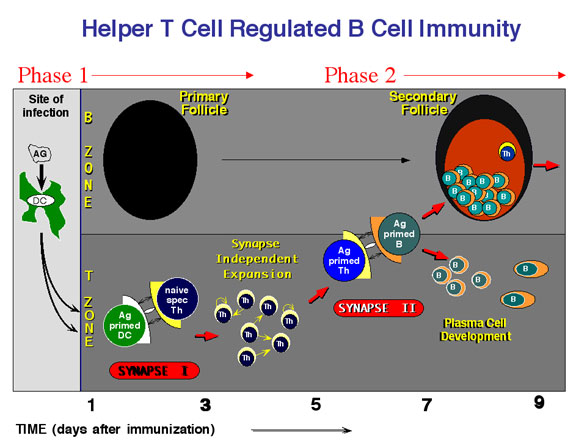| Adaptive immunity begins at the site of infection
with activation of dendritic cells. These activated dendritic cells migrate
to draining lymph nodes where they seek to form connections with antigen-specific
naïve helper T cells (immune synapse I). As a consequence of synapse
I interactions the helper T cells become activated, expand, and then migrate
to the B cell areas (primary follicles), where they seek to form connections
with antigen-specific B cells (immune synapse II). At this point, B cells
either become plasma cells and produce large quantities of antibody for
clearance of antigen, or they enter the B cell areas to form secondary follicles
that will mature into the germinal center reaction for the production of
high affinity B cell memory. |

